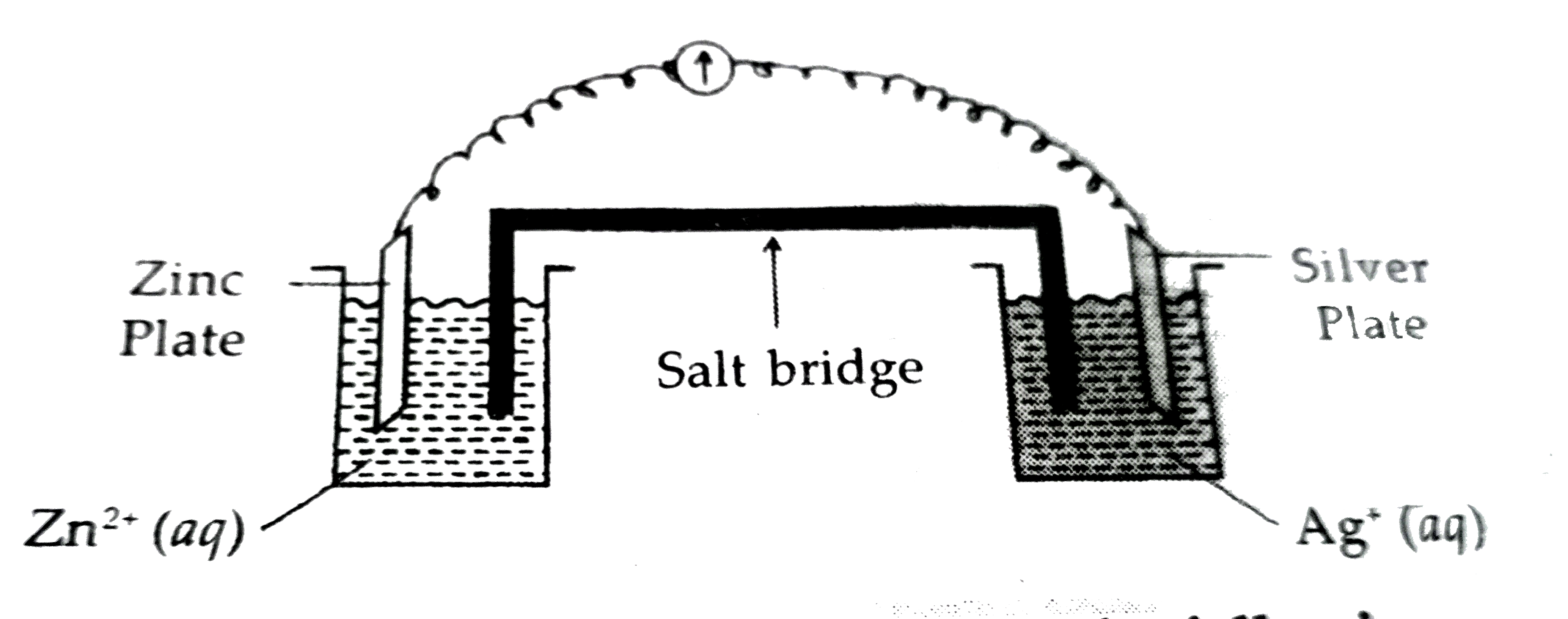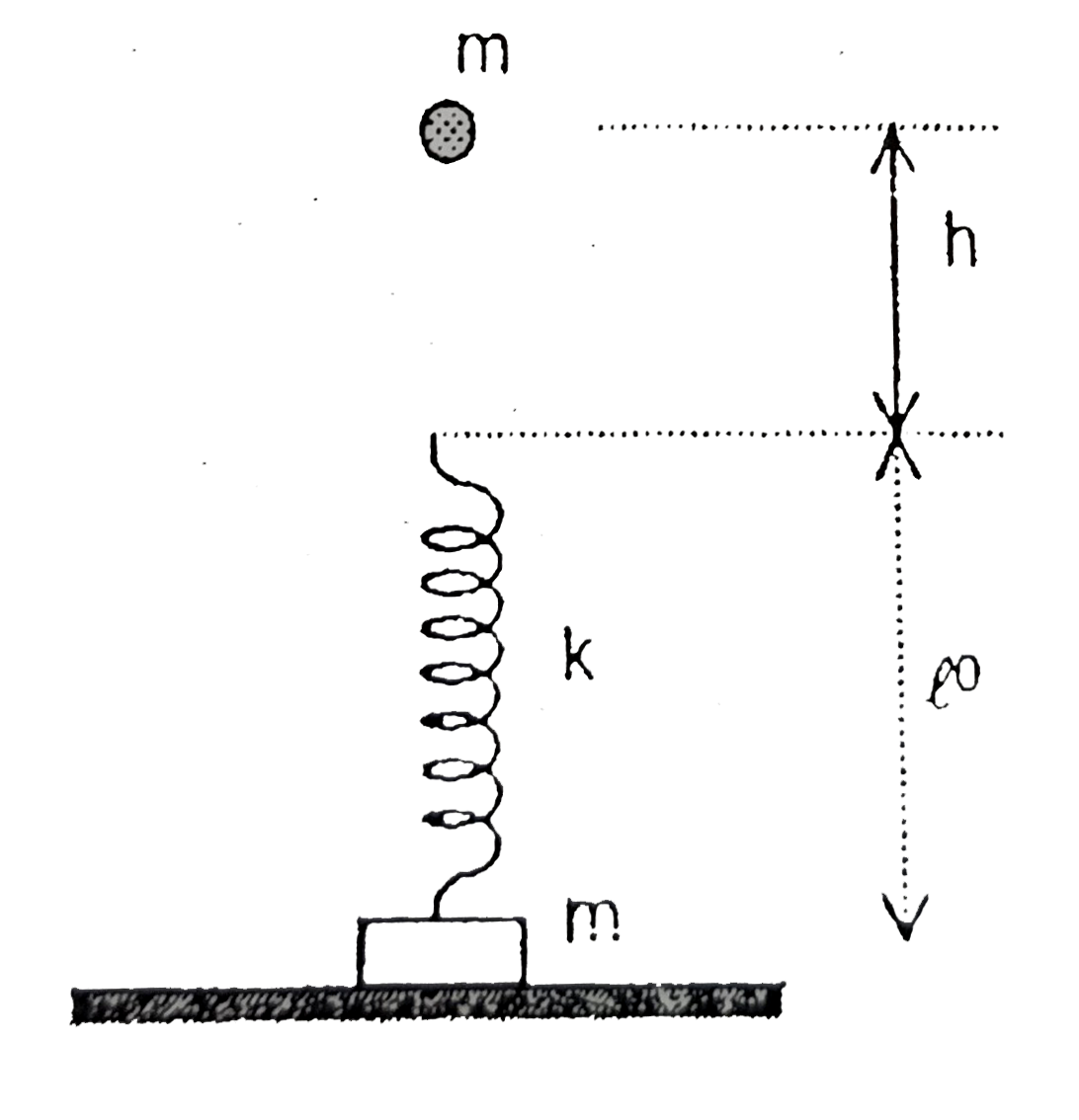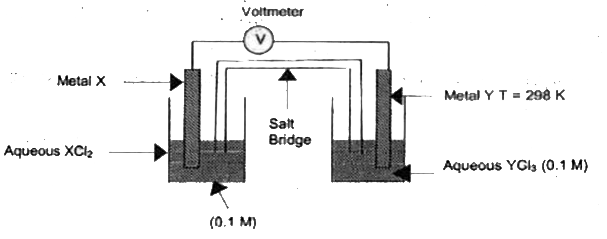The position of some metals in the electrochemical series in decreasing electropositive character is given as Mg gt Zn gt Cu gt Ag. What will happen if a copper spoon is used to stir a solution of aluminium nitrate?
The spoon will get coated with aluminium
an alloy of aluminium and copper is formed
The solution becomes blue
there is no reaction
The correct Answer is:D
Step by step video & image solution for The position of some metals in the electrochemical series in decreasing electropositive character is given as Mg gt Zn gt Cu gt Ag. What will happen if a copper spoon is used to stir a solution of aluminium nitrate? by Chemistry experts to help you in doubts & scoring excellent marks in Class 12 exams.
Updated on:21/07/2023Topper's Solved these Questions
- ELECTROCHEMISRYBOOK - RESONANCE ENGLISHCHAPTER - ELECTROCHEMISRYEXERCISE - Assertion Reasoning
11 Videos
- ELECTROCHEMISRYBOOK - RESONANCE ENGLISHCHAPTER - ELECTROCHEMISRYEXERCISE - Subjective Questions
14 Videos
- ELECTROCHEMISRYBOOK - RESONANCE ENGLISHCHAPTER - ELECTROCHEMISRYEXERCISE - Board Level Exercise
20 Videos
- ELECTRO CHEMISTRYBOOK - RESONANCE ENGLISHCHAPTER - ELECTRO CHEMISTRYEXERCISE - PHYSICAL CHEMITRY (ELECTROCHEMISTRY)
53 Videos
- EQUIVALENT CONCEPT & TITRATIONSBOOK - RESONANCE ENGLISHCHAPTER - EQUIVALENT CONCEPT & TITRATIONSEXERCISE - Part -IV
22 Videos
Similar Questions
The position of some metals in the electrochemical series in dectreasing electropositeve character is given as Mg>Al>Zn>Cu>Ag. What will happen if a copper spoon is used to stir a solution of aluminimum nitrate ?
View SolutionThe position of some metals in the electrochemical series in dectreasing electropositeve character is given as Mg>Al>Zn>Cu>Ag. What will happen if a copper spoon is used to stir a solution of aluminimum nitrate ?
View Solution
Knowledge Check
The position of some metals in the electrochemical series in dectreasing electropositeve character is given as Mg>Al>Zn>Cu>Ag. What will happen if a copper spoon is used to stir a solution of aluminimum nitrate ?
AThe spoon will get coated will aluminium.BAn alloy of copper and aluminium is formed.CThe solution becomes blue.DThere is no reaction.
(a) When a bright silver object is placed in the solution of gold chloride, it acquires a golden tings but nothing happens when it is placed in solution of copper chloride. Explain this behaviour of silver.
[Given : E∘Cu2+/Cu=+0.34V,E∘Ag+/Ag=+0.80V,E∘Au3+/Au=+1.40V]
(b)
Consider the figure given above and answer the following questions :
(i) What is the direction of flow of electrons?
(ii) Which is anode and which is cathode?
(iii) What will happen if the salt bridge is removed ?
(iv) How will concentration of Zn2+ and Ag+ ions be affected when the cell functions ?
(v) How will concentration of these ions be affected when the cell becomes dead ?
View SolutionRadiation from hydrogen gas excited to first excited state is used for illuminating certain photoelectric plate . When the radiation from same unknown hydrogen-like gas excited to the same level is used to expose the same plate , it is found that the de Broglie wavelength of the fastest photoelectron has decreased 2.3timegt It is given that the energy corresponding to the longest wavelength of the Lyman series of the known gas is 3 times the ionization energy of the hydrogen gas (13.6eV). Find the work function of photoelectric plate in eV. [Take(2.3)2=5.25]
View SolutionIn the figure shown a massless spring of stiffness k and natural length l0 is rigidly attached to a block of mass m and is in vertical position. A wooden ball of mass m is released from rest to fall under gravity. Having fallen a height h the ball strikes the spring and gets stuck up in the spring at the top. What should be the minimum value of h so that the lower block will just lose contact with the ground later on ? Assume that l0>>4mgk. Neglect any loss of energy. (Given k=mg/2)

View SolutionThe following diagram shown as electrochemical cell in which the respective half-cells contains aqueous 1.0M solutions of the salts XCl2andYCl3. Given that
3X(s)+2Y3+(aq)→3X2(aq)+2Y(s)εcell>0

Which of the following statements is correct?
I. The electrode made from metal X has positive polarity
II. Electrode Y Is the anode
II. Tho flow of electrons is from Y to X
IV. The reaction at electrode X is an oxidation
V. The salt bridge would most likely contain silver nitrate
View SolutionA pulse is propagating on a long stretched string along its length taken as positive x-axis. Shape of the string at t = 0 is given by y=√a2−x2when |x|≤a=0 when |x|≥a . What is the general equation of pulse after some time 't' , if it is travelling along positive x-direction with speed V?
View SolutionThe colloidal particles are electrically charged as a indicated by their migration towards cathode or anode under the applied electric field. In a particular colloidal system, all particles carry either positive charge or negative charge.
The electric charge on colloidal particles orginate in several ways. According to preferential adsorption theory, the freshly obtained precipitate particles adsorb ions from the dispersion medium, which are common to their lattice and acquire the charge of adsorbed ions. For example, For example, freshly obtained Fe(OH)3 precipitated is dispersed, by a little FeCl3, into colloidal solution owing to the adsorption of Fe3+ ions in preference. Thus sol particles will be positively charged.
In some cases the colloidal particles are aggregates of cations or anions having ampiphilic character. When the ions posses hydrophobic part (hydrocarbon end) as well as hydrophilic part (polar end group), they undergo association in aqueous solution to form particles having colloidal size. The formation of such particles, called micelles plays a very important role in the solubilization of water insoluble substances, (hydrocarbon, oils, fats, grease etc.). In micelles, the polar end groups are directed towards water and the hydrocarbon ends into the centre. The charge on sol particles of proteins depends on the pH. At low pH, the basic group of protein molecule is ionized (protonated) and at higher pH (alkaline medium), the acidic group is ionized. At isoelectric pH, characteristic to the protein, both basix and acidic groups are equally ionized. The stability of colloidal solution is attributed largely to the electric charge of the dispersed particles. This charge causes them to be coagulated or precipitated. On addition of small amount of electrolytes, the ions carrying oppiste charge are adsorbed by sol particles resulting in the neutralization of their charge. When the sol particles either with no charge or reduced charge, come closer due to Brownian movement, they coalesce to form bigger particles resulting in their separation from the dispersion medium. This is what is called coagulating or precipitation of the colloidal solution. The coagulating power of the effective ion, which depend on its charge, is expressed in terms of its coagulating value, defined as its minimum concentration (m mol/L) needed to precipitate a given sol.
Under the influence of an electric field, the particles in a sol migrate towards cathode. The coagulation of the same sol is studied using NaCl, Na2SO4 and Na3PO4 solutions. Their coagulating values will be in the order :
View SolutionElectrolysis is an important technique for extraction of metals, and each ion of the solution needs a minimum voltage to get discharged and this value is expressed in terms of discharge potential. For some metal ions the discharge potentials follow the order given below :
Li+>K+>Ca2+>Na+>Mg2+>Al3+>Zn2+>Fe2+>Ni2+>H3O+>Cu2+>Hg2+2>Ag+>Au3+
For some anions the discharge potentials are in the order :
SO2−4>NO−3>OH−>Br−>I−
When conc. H2SO4 is electrolysed with high current using Pt electrodes, the product obtained at anode is :
View Solution
